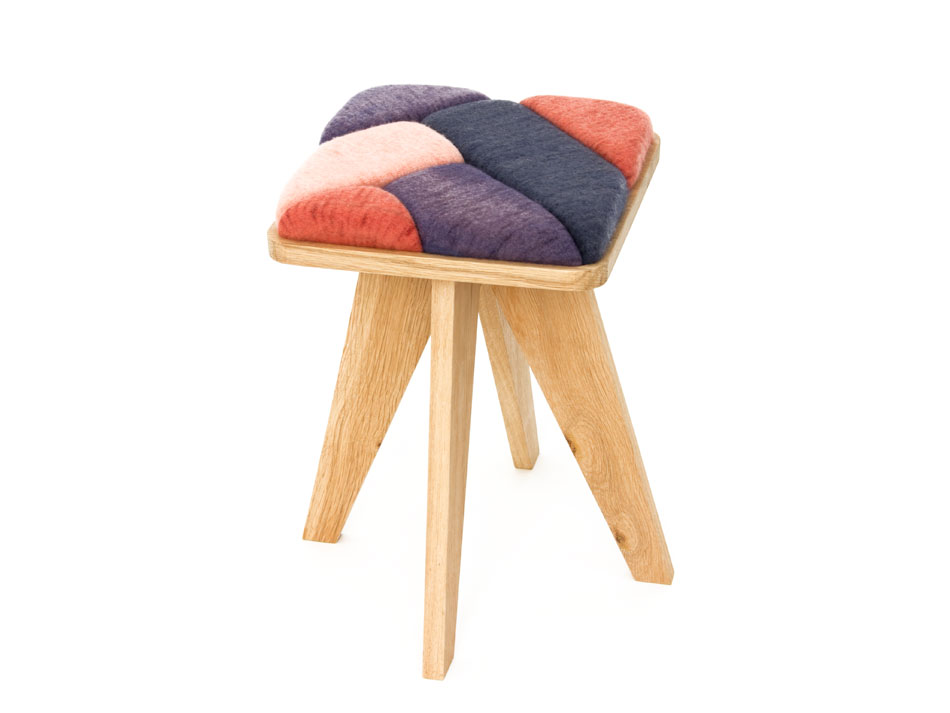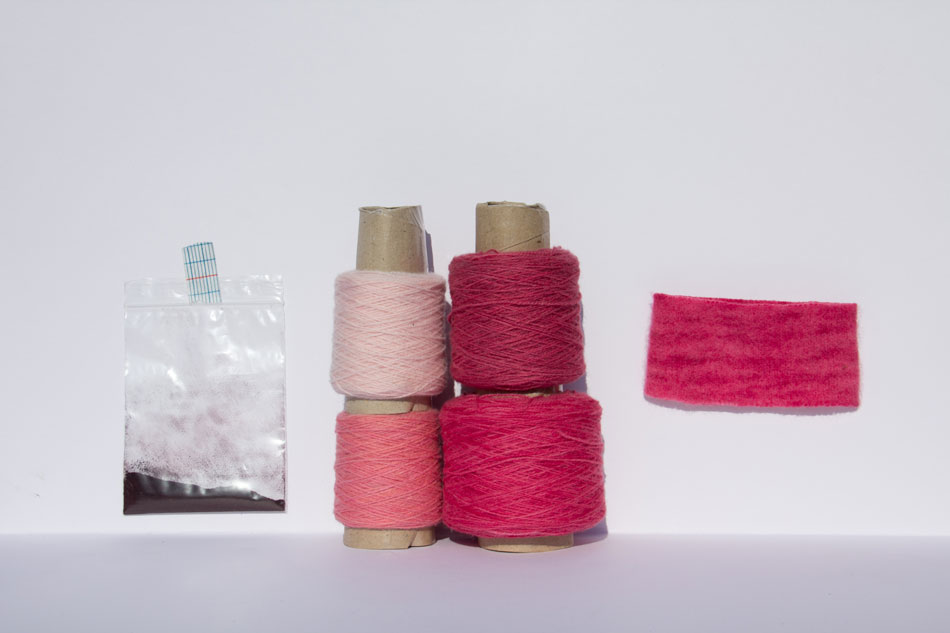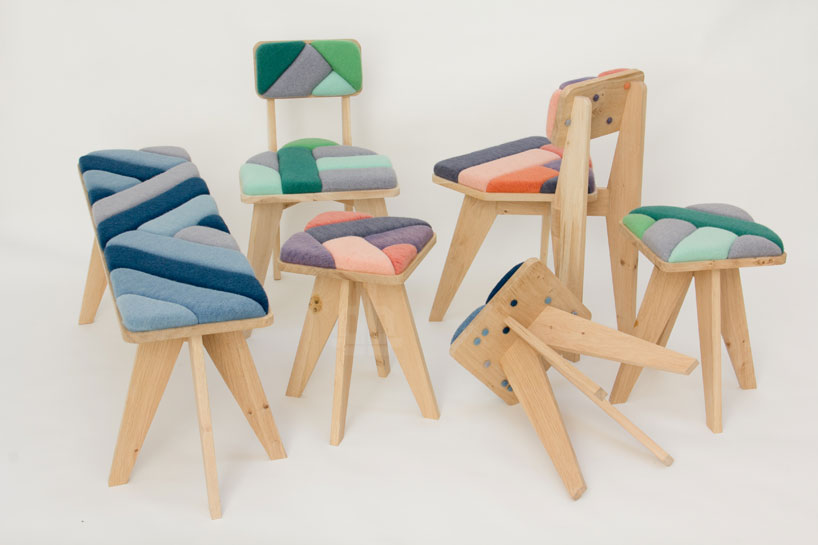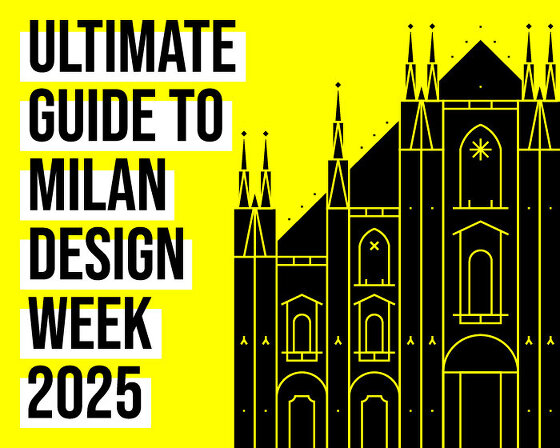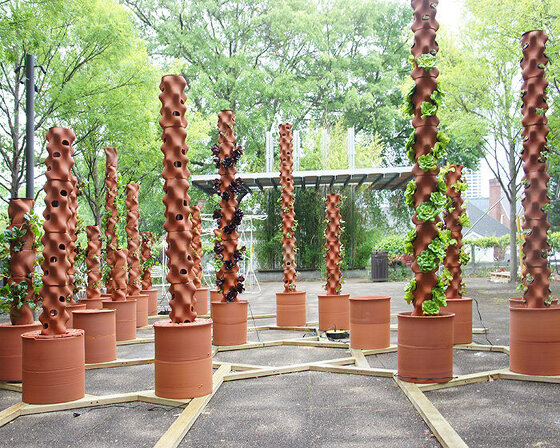‘windworks furniture’ by merel karhofall images courtesy of merel karhof
in 2010, merel karhof built her ‘wind knitting factory’, a wind-powered knitting machine with blades of more than a meter in diameter, which used air currents to power the mill–their intensity determining the speed at which it knit: windy conditions saw rapid knitting activity, while less wind saw a slower, more controlled production.
in her first experiments, the dutch designer created scarves as a way of illustrating how her mobile wind factory worked, but she has since been exploring the possibility of using it for other applications such as that of harvesting upholstery for chairs and stools. in an event this past week (may 12-19th, 2013) called ‘windworks’, karhof presented to the public, the means in which she has developed her ‘windworks’ furniture collection, at the famous windmill area, the zaanse schans in the netherlands. she collaborated with the local saw mill ‘het jonge schaap’ (which sawed planks from trees) and colour mill ‘de kat’ (outfitted to grind pigments) there to produce her series of cheerful seating objects from natural materials.
 ‘windwork’ stool and chair in synthetic green
‘windwork’ stool and chair in synthetic green
first the base of each piece: stools, chairs, benches, were sawed by wind energy and assembled at ‘het jong schaap’. they were then transported by water to the pigment mill where yarn was tinted with natural dyes, which had been broken down at ‘de kat’. upon completion of the dying process, karhof’s factory knit the yarns. the resulting upholstery has been constructed from little pillows, each representing the amount of time needed by the wind to make them. on this occasion of creating furniture through her ‘wind knitting factory’, karhof has incorporated a pennon, a machine that allows the facility to turn away from the wind when speed gets too high, allowing it to operate independently.
karhof has sent designboom these images of the furniture produced by her ‘wind knitting factory’.
 back detail
back detail
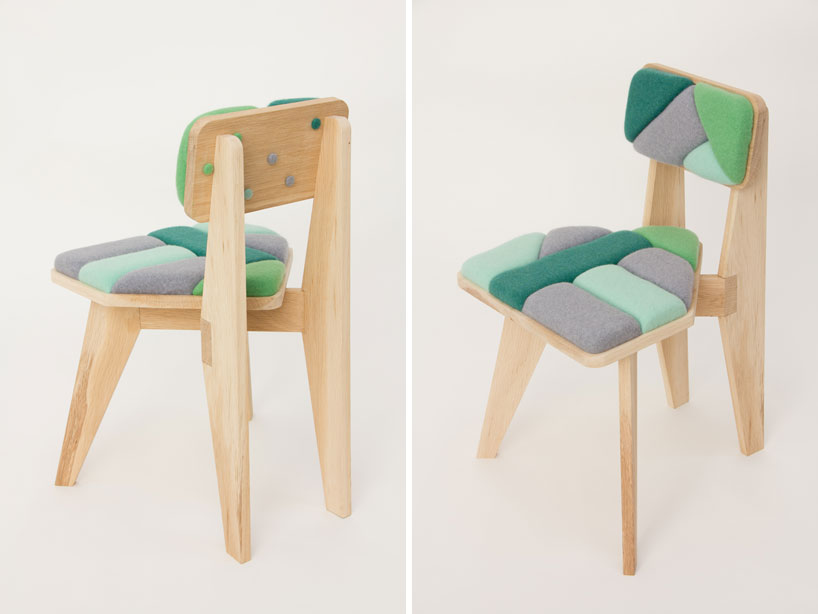 the size of the upholstered cushions represents the amount of time needed by the wind to produce them
the size of the upholstered cushions represents the amount of time needed by the wind to produce them
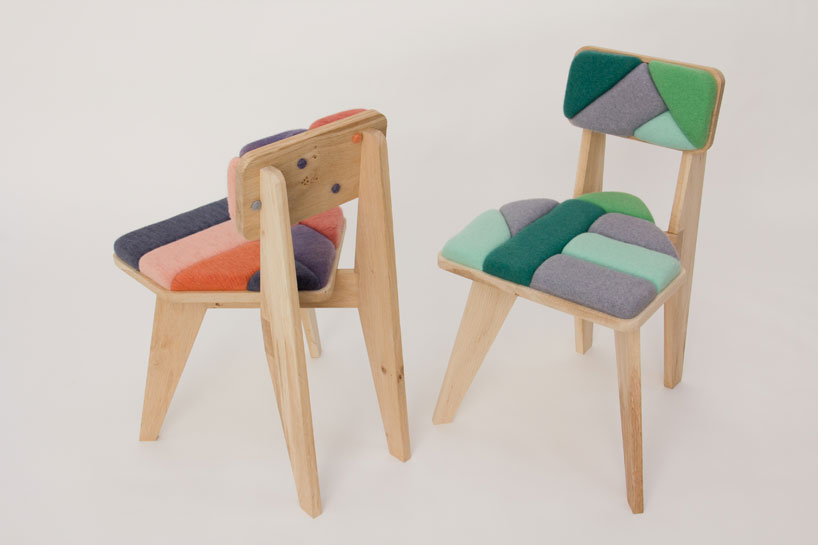 ‘windchair’ in madder and synthetic green
‘windchair’ in madder and synthetic green
 ‘windstool’ in indigo, madder and synthetic green
‘windstool’ in indigo, madder and synthetic green
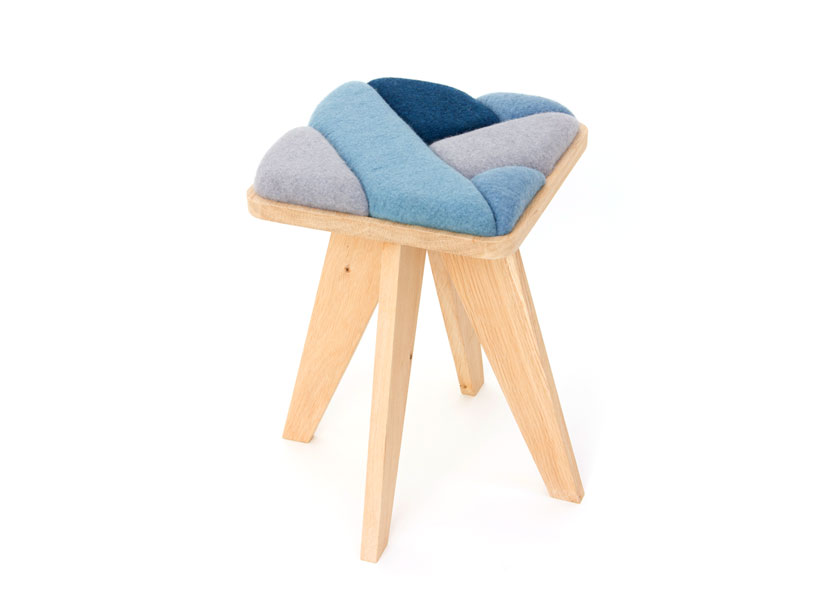
the wooden bases were first made at the wood mill and then transported to the color mill where the cushioning was done to complete each piece of furniture
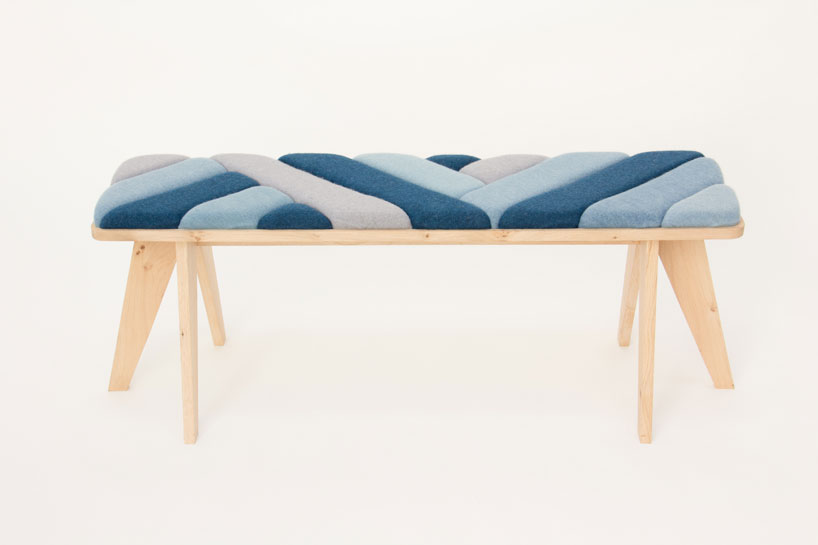
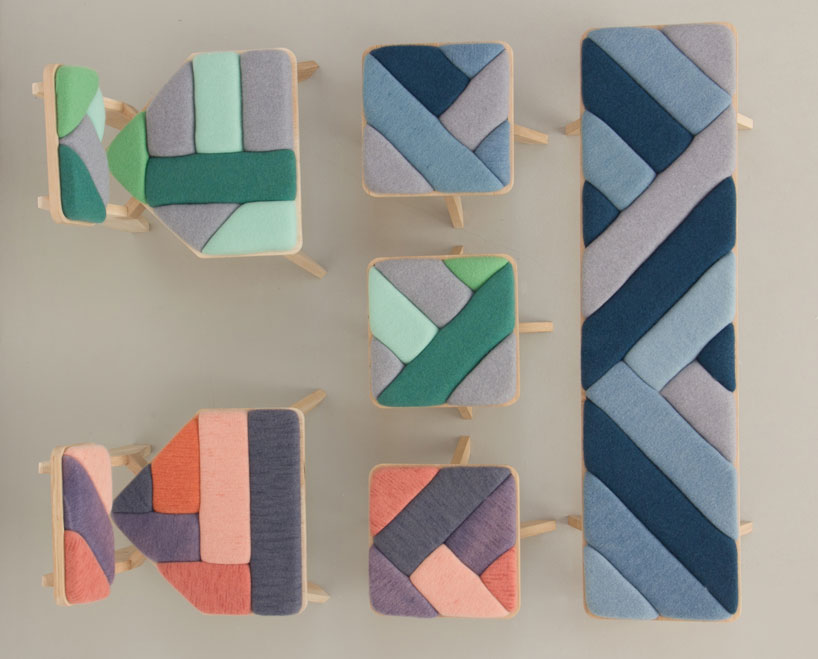 top view of the colourful pillow combinations
top view of the colourful pillow combinations
 indigo dye
indigo dye
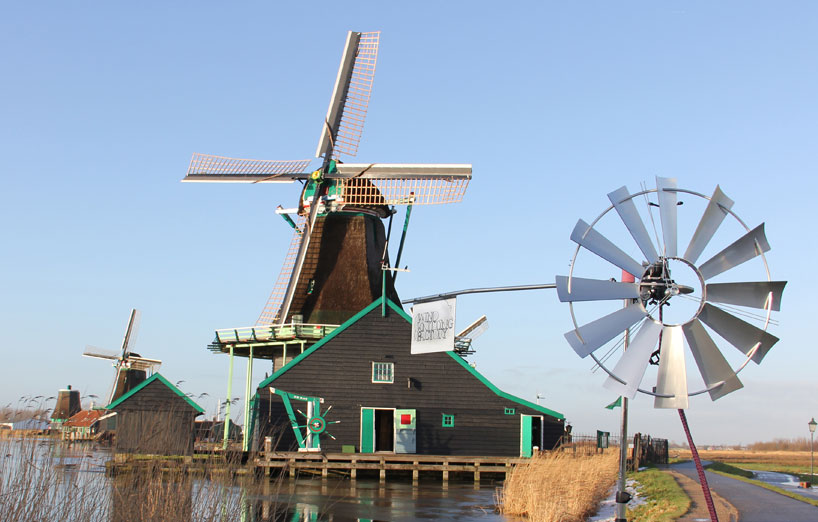 the wind knitting factory at the zaanse schans, the netherlands by merel karhof
the wind knitting factory at the zaanse schans, the netherlands by merel karhof
production of the ‘windworks furniture’ collection by merel karhofvideo courtesy of merel karhof


